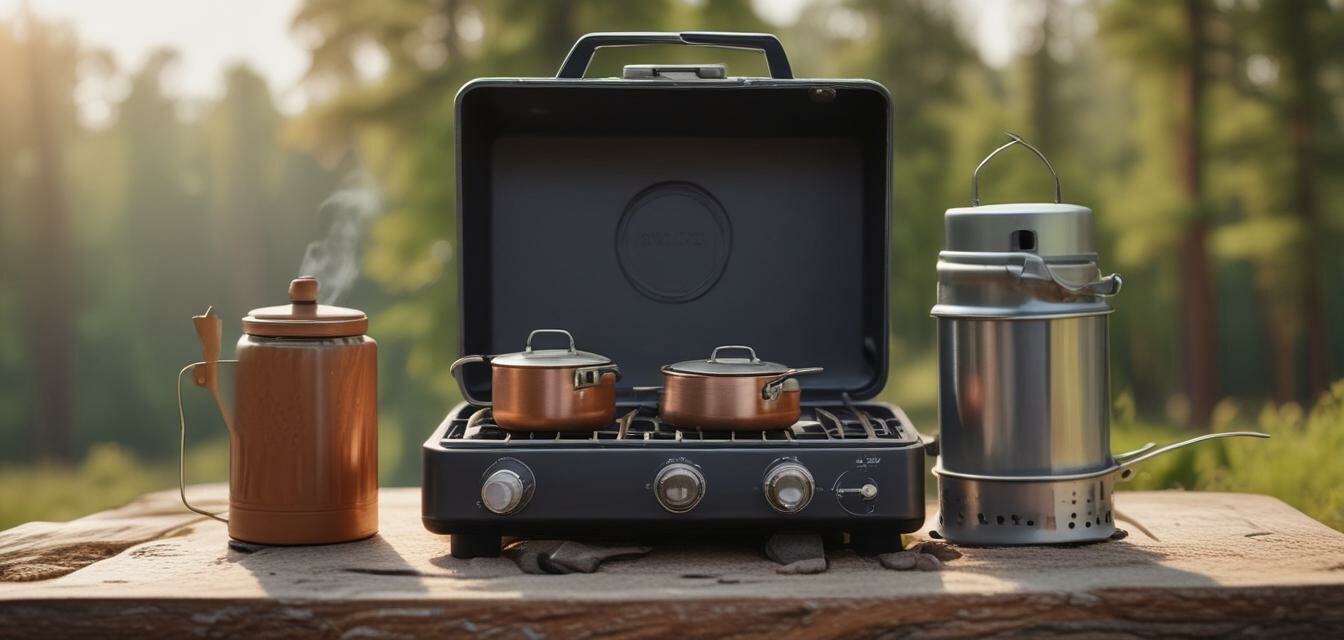
Choosing the right camping stove: A complete guide
Key Takeaways
- Types of camping stoves vary: canister, liquid fuel, and wood-burning.
- Choose based on the type of camping: car camping, backpacking, or survival.
- Consider your cooking style and the size of your group during selection.
- Look for portability and ease of use for outdoor adventures.
- Safety features are crucial for a worry-free cooking experience.
Camping stoves add convenience and enjoyment to your outdoor adventures. Selecting the right one can enhance your cooking experience, whether you're car camping with friends or backpacking through the wilderness. In this guide, we’ll explore important factors to consider when choosing a camping stove that suits your needs.
Types of camping stoves
Understanding the different types of camping stoves is essential for making an informed choice. Each type comes with its own set of advantages and disadvantages. Here’s a breakdown:
| Type | Fuel Source | Best For | Pros | Cons |
|---|---|---|---|---|
| Canister stove | Pre-filled fuel canisters | Backpacking | Lightweight, easy to pack, quick setup | Canisters can be hard to find in remote areas |
| Liquid fuel stove | Liquid fuels (gasoline, white gas) | Car camping, long trips | Refillable, efficient for large groups | Heavier and bulkier than other types |
| Wood-burning stove | Natural wood | Survival, eco-friendly camping | No fuel cost, can use local materials | Requires time to gather and prepare fuel |
Things to consider when choosing a camping stove
1. Cooking style
Your cooking style will greatly influence the type of stove you should choose. If you’re a gourmet camper who loves preparing meals, consider a larger, more versatile stove. Conversely, if you're more of a quick-meal camper, a lightweight model could suffice.
2. Size of your group
Consider how many people you'll be cooking for. A larger stove or multiple smaller stoves may be necessary for larger camping groups, while solo adventurers should opt for compact models.
3. Weight and portability
For backpacking trips, weight is a critical factor. Find a stove that balances performance and portability to ensure you’re not weighed down on your travels. Models designed specifically for backpacking can save you a lot of hassle.
4. Ease of use and setup
Opt for a stove that’s easy to use and sets up quickly. Some models come with features that allow for efficient cooking without much hassle, making them ideal for adventure enthusiasts.
Featured camping stove brands
There are several reputable brands on the market providing quality camping stoves. Familiarizing yourself with them can ease your selection process:
- Jetboil - Known for their fast boiling canister stoves
- MSR - Offers durable liquid fuel stoves
- Primus - Features versatile and lightweight options
- Camp Chef - Great for car camping with larger stoves
Conclusion
Choosing the right camping stove is vital for enjoying your outdoor cooking experiences. By considering your cooking style, group size, weight preferences, and brand reliability, you can find a stove that meets your needs. For more insights into adventure essentials, check out our other buying guides, like this one on essential camping gear or explore our full range of camping products to prepare for your next adventure.
Pros
- Improves cooking quality and experience while camping
- Offers various options to suit different needs
- Portable designs available for backpackers
- Can enhance user’s outdoor experience significantly
Cons
- Some models can be heavy for long hikes
- May require specific fuel types, limiting availability
- Setup might be complicated for beginners
Tips for using your camping stove
- Always read the manufacturer's instructions before use.
- Test your stove at home before your trip to ensure it's in good working order.
- Store fuel and equipment safely to avoid accidents.
- Practice Leave No Trace principles while using your stove outdoors.
